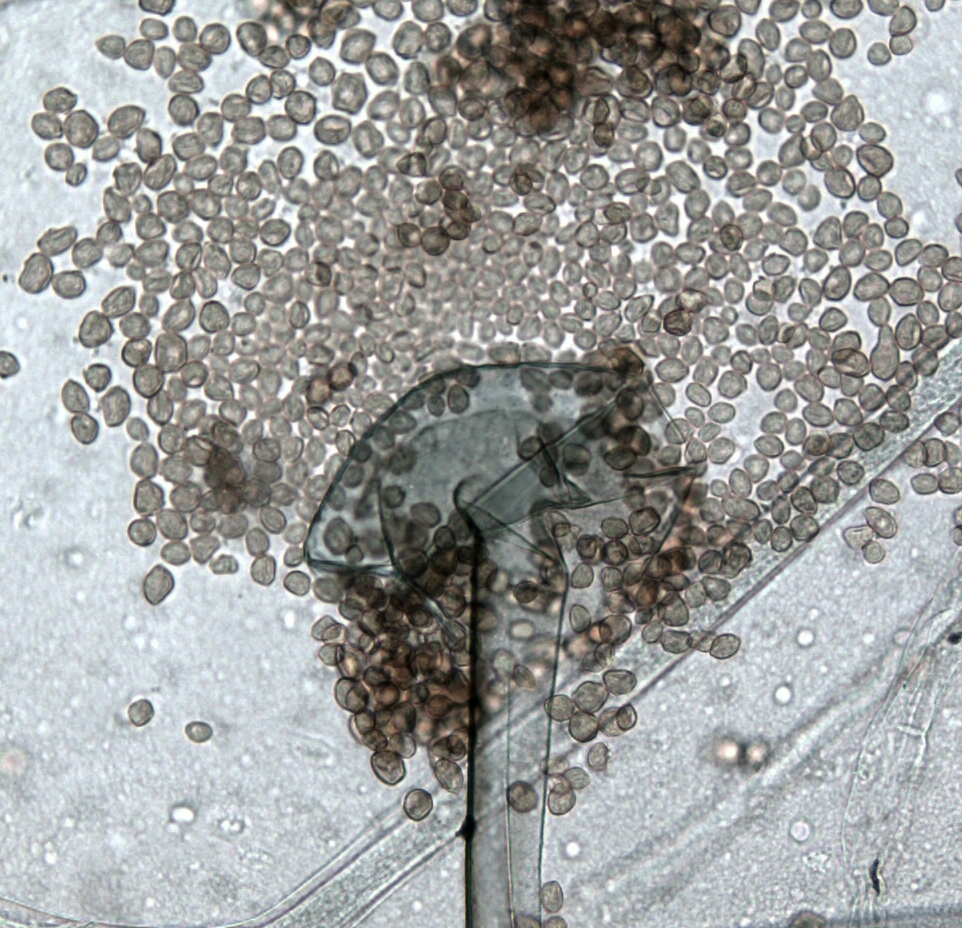Mold Library
Rhizopus

Distribution
The genus Rhizopus is a cosmopolitan fungus with a worldwide distribution. It a member of the division Zygomycota unlike the majority of commonly isolated indoor air fungi. Rhizopus is often isolated from soil and plant material, and some species can also be plant pathogens. It is commonly known as the �bread mold� and indoors it can be isolated from dust, wood pulp, food and food products.
Growth Characteristics
Rhizopus has a rapid growth rate and a wooly texture. The colonies are typically grayish to brownish.
Microscopic Characteristics
The genus Rhizopus produces spores in structures called sporangia, which look like sacs of spores. The sporangia in Rhizopus have columellae and the spores are ovoid and irregular. Rhizopus is distinguished from the genus Mucor by rhizoids, which are root-like structures (in Latin rhizo=root).
Health Effects
Rhizopus is an agent of zygomycosis. There are four kinds of systemic disease: rhinocerebral, thoracic, gastrointestinal, and cutaneous. In most cases patients are already compromised in some manner, i.e. people with diabetes or leukemia.
